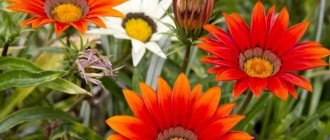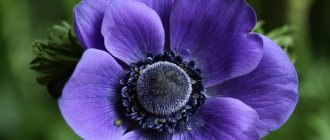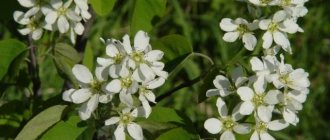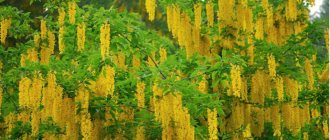Conditions and subtleties of growing majors
Flowers are light-loving and respond well to heat. Although it is believed that this plant is too delicate. After all, it can suffer even from light frosts. Gardeners never cease to admire the beauty of zinnia, cultivating the crop in their summer cottages.
Majora flowers are planted in well-lit flower beds, away from the shade of large trees and multi-tiered compositions. It is better to protect such plants from drafts. The choice of soil mixture is important when planting seeds and seedlings.
During dry seasons, zinnias become smaller, the flowers dry out at the edges, and the flowering period is shortened. To extend this period, dried leaves and buds must be removed.
How to grow zinnia
Zinnia reproduces by sowing seeds in the ground and through seedlings. With the first method, seed sowing is carried out from early May to early June, differently in each region. When the soil has warmed up well and the threat of return frosts has disappeared, grooves 4 cm deep are laid in the flower garden, spilled with warm water, and the seeds are placed in them. The top of the crops is sprinkled with humus mixed with garden soil. The emerging shoots are broken through in such a way that there are gaps of 20 cm between the shoots. The interval is approximate and depends on the habit of the plant.
Growing majors through seedlings requires a well-lit room. If it is not there, you will have to organize lighting with an extension of daylight hours to 14 hours. Seeds are sown in early April in peat pots filled with substrate, 3 pieces in each container. For better germination, the temperature in the room is maintained at about 230C. Shoots will begin to appear after 3 days, and at this time the amount of watering should be reduced to avoid seedlings becoming infected with blackleg.
Fertilizer and soil for majors
Full, abundant flowering can be achieved by cultivating plants on fertile soils saturated with complex fertilizers and humus with an optimal pH level. Turf soil is best suited. Sometimes it is mixed with leaf soil and peat is added. The soil must be drained and allow moisture to pass through well. Majora flowers react critically to insufficient moisture. Therefore, it is necessary to organize systematic watering of the flower bed where such plants are planted.
As for fertilizing, 4 approaches to fertilizing plants will be enough. Mineral and organic complexes are also suitable, which must be added at the following frequency:
- before sowing seeds or planting seedlings, rotted compost or humus is added to the soil;
- before the majors bloom;
- during the period of bud formation;
- during flowering.
According to experienced gardeners, before fertilizing, you should sprinkle the ground with a portion of wood ash.
Landing Features
Zinnias do not respond well to cold. Therefore, seeds are sown in the ground after the spring frosts have passed. It is advisable to use purchased planting material. Majors - flowers that are grown at home, are not always large and full. Often they are empty.
Before sowing the seeds, the bed is carefully prepared: they fertilize, dig, and loosen the soil. Make grooves along the entire length of the bed, about 3 cm deep, water abundantly and plant the planting material evenly. After germination, the seedlings are thinned out, leaving gaps of about 25-30 cm between neighboring plants.
If you decide to plant already strong seedlings in the garden, then take into account the fact that transplanting zinnias is poorly tolerated. Here it is important to preserve the integrity of the lump of earth that wraps around the root system of the young plant.
If there is a threat of reverse frost, the plantings are protected by covering. When the seedlings get stronger, it is advisable to pinch them, so the plant will become bushier and more luxuriant.
If the summer is too dry, experts recommend spraying flowers with a Zircon solution in the proportion of 2 drops per 1 liter of water once every 3 days. This will give the plant strength to endure the summer heat.
Majora flowers, which are easy to plant and care for, are great for decorating city alleys and garden plots. They also grow well in outdoor flowerpots. They are good for cutting, so bouquets combined from these flowers will please the eye for a long time.
Especially now, when new beautiful varieties have appeared with large, full flowers and numerous colors of petals that match the touch of velvet. The most popular varieties are: Magic Rose, Lilliput, Peppermint Stick, HAAGA, Gypsy, Chip and Dale.
Turf soil is considered the ideal soil for planting flowers. It is recommended to add leaf soil and peat to it.
- How to water zinnias (majors)
Zinnias are drought-resistant flowers. Therefore, they are often planted in city flower beds, where watering is not as frequent and sufficient as in your own garden. They thank for systematic and abundant watering with bright and lush flowering. But you should water the zinnias carefully so that drops of water do not fall on the flower baskets, otherwise the petals will begin to dry out and the plant will look untidy.
- How to propagate zinnias (majors)
Major zinnias reproduce only by seeds, which can be sown as convenient: in pots for seedlings in early April or in May by direct sowing in the ground. In the latter case, flowering will occur a little later.
We invite you to familiarize yourself with Rose flower description for schoolchildren
Zinnia majors do not like the cold, so the seeds are sown in the ground after spring frosts. It is advisable to use purchased seeds. Flowers grown from home seeds are not always large and full. Most often they are empty.
Before sowing, the bed is well fertilized, dug up and loosened. Make furrows no more than 3 cm deep, water well and sow seeds evenly and not densely. Under favorable conditions, the first shoots appear within a week. Grown seedlings break through, leaving gaps of 20-40 cm.
Zinnia seedlings do not tolerate transplantation well, therefore, you need to plant plants in the flower garden carefully, trying to preserve the lump of earth as intact as possible. Planting takes place in early June. If at this time there is a threat of return frost, zinnia plantings are protected with covering material.
Particular attention should be paid to fertilizing. After fertilizing, major zinnias quickly respond with lush and beautiful flowering. During the summer season, flowers are fed 4 times:
- before sowing seeds (well-rotted humus and compost are added to the bed);
- before flowering;
- during the budding period;
- during flowering.
Experienced gardeners recommend sprinkling the ground around the zinnia with wood ash before fertilizing.
The soil around flowers needs to be loosened regularly, especially after watering and rain. This will provide the roots with the oxygen necessary for full development and prevent many fungal diseases. If a white-grayish coating appears on the leaves of a flower, it means the flower is sick.
Zinnia majors are affected by powdery mildew, root rot, fusarium, as well as pests: snails, spider mites, aphids and slugs. The cockchafer also loves to feast on majors.
Zinnias - majors - are an excellent option for decorating personal plots and urban flower beds. Flowers also grow well in outdoor flowerpots. They are also good for cutting. To ensure that zinnia flowers remain attractive and fresh for a long time, after cutting, the stems are immersed in hot water. This feature allows you to admire bouquets of zinnias much longer than those of other beautifully flowering plants.
Organizing a flower watering system
Majora flowers are drought resistant. Therefore, they can often be seen in city flower beds, along alleys and avenues, where things are difficult with the organization of watering. By providing zinnias with enough water throughout their life cycle, you will get plants that bloom brightly and profusely. Although you should be careful with watering. If drops of water fall on the flower basket, its petals will begin to dry out, and the appearance of the plant will seem untidy.
Popular types and varieties
In floriculture, perennial types of zinnia are practically not used, but 2 annual types are extremely popular.
Elegant zinnia (Zinnia elegans) is characterized by accelerated growth and large inflorescences (up to 14 cm in diameter). Plant height depends on the variety (30 – 90 cm)
Zinnia leaves
Depending on the structure of the inflorescences, there are 3 most cultivated groups:
- Dahlias are bushy plants with a small number of shoots of the first row, up to 90 cm in height and large leaves (up to 12 cm). The inflorescences have a hemispherical shape, double, large - reaching 14 cm in diameter. Popular varieties are: “Violet” (has a purple color), “Crimson Monarch” (dark red inflorescences), “Lavandelkenigin” (with lavender inflorescences with a slightly purple tint), “Orange Koenig” (bright orange and red inflorescences), “Polar Bior” or Polar Bear (flowers white with a greenish tint), “Purple Prince” (purple inflorescences), “Rose” (flowers of different shades of pink) , “Tango” (red-orange flower color), “Cherry Queen” (large dark cherry flowers), “Sharlah” (bright red inflorescences with an orange tint), “Envy” (diameter of green inflorescences up to 15 cm), “Peppermint Stick” (a mixture of varieties, flowers have variegated petals), “Benariz Giants” (a tall plant, reaches a height of 1.2 m, inflorescences of various colors - red, yellow, pink, crimson, purple, white, lilac, orange );
- Pompon or lilliputian - bushy plants, low-growing (up to 55 cm in height), with a large number of shoots of the 1st - 4th order, compact, small-leaved. The inflorescences are cap-shaped, double, small (4–5 cm in diameter), bloom simultaneously. The most famous varieties: “Rotkopchen” and “Tom-Thumb” with bright red flowers;
- Fantasy - spherical bushes, up to 65 cm in height, with large leaves. Plants have a small number of first-order shoots. The inflorescences are hemispherical, curly, loose, of different colors, large (10 cm or more in diameter). Popular varieties: “Fantasy” (with curved reed flowers, forked at the end, varied in color) and “Gift” (bright red flowers).
Variety of colors
Zinnia angustifolia. The plants are bushy, reaching a height of 30–40 cm. They have oblong, lanceolate sessile leaves, with a wide base and a pointed end, up to 6 cm in length. The inflorescences are small (4 - 6 cm in diameter), simple and double, the color can be different - all shades of yellow, red, brown. The most popular varieties are “Persian Kapit” (inflorescences with contrasting spots on the tips of reed flowers), “Candy Stripe” (with striped inflorescences).
Disease resistance
Don't forget about loosening the soil. This is important, especially after rain and watering the soil. This way you will ensure free access of oxygen to the root system of the flowers. This will allow the plant to develop fully and be more resistant to the formation of fungal infections.
By external signs, the sickness of plants can be determined by the white-grayish coating that appears on the leaves.
Zinnias are also prone to powdery mildew, root rot, and fusarium. Major pests also do not neglect them: snails, spider mites, aphids, slugs, chafers.
Use in landscape design
The versatility of the plant allows you to decorate gardens, flower beds, city front gardens, and ridges with tall varieties of zinnia. Low-growing varieties are ideal for planting along borders, in indoor and balcony pots.
Tall varieties of Zinnia should be planted deep in a common flowerbed.
Majors are great for forming bouquets and last a long time in a vase. To revive wilted flowers in a vase, you should refresh the cut and place the zinnia in hot water for a short time.
Zinnia looks most impressive in a group combination with marigolds, marigolds, verbena and Chinese aster.
Zinnia on city streets
Propagation and planting of zinnia
Majora flowers, the photo of which is presented above, reproduce exclusively by seeds. Mostly seedlings are used for planting. But you can sow seeds in open ground.
Laying planting material for seedlings begins in March, the deadline is early April.
Majors are planted in flower beds, as well as in pots for growing on the window through direct sowing with the onset of May warmth. Although in this situation the flowering period begins a little later.
Why should you grow zinnia?
Zinnias reproduce by seeds. In the southern regions they are sown directly into flower beds in late April - early May. In the middle zone - for seedlings (in greenhouses or greenhouses) in April. The seeds are sprinkled with a layer of soil about 0.5 cm, watered abundantly and covered with paper or covering material to protect the soil from drying out.
At a temperature of 21–23 ˚С, seedlings appear on the 4–8th day. It is advisable to plant seedlings in peat or plastic pots with a diameter of 7–8 cm, but it is also possible in greenhouse beds, since zinnia seedlings, as a rule, tolerate transplantation well. Young plants are planted in flower beds in early June, when the threat of frost has completely passed. The distance between them is 20–35 cm (depending on the size of the variety).
Zinnias are very heat-loving and drought-resistant, which explains their greatest distribution in the southern, warmest regions of our country. They like to grow in bright, warm places with light, humus-rich, fairly moist, but not soggy soils.
Under favorable conditions in warm summers, zinnia blooms profusely all summer from June until the first frost. Due to the high requirements for cultivation and care, many do not like majors. Zinnia fans adore these plants for the extraordinary beauty of their colorful flowers. If the garden conditions are right, it is worth trying to grow these interesting plants. Long-lasting and beautiful flowering is undoubtedly their great advantage, which should be used when decorating summer flowers.
We suggest you read How to get rid of worms using traditional methods











